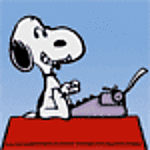1⁄35
Texturing AFV Surfaces
 |
Weld Seams (continued) |
Once finalized some seams may look to rough. Spreading
some liquid cement over them makes them "softer". If some seams got too
deep, mix up some putty with liquid glue and spread it over the affected
area. You can also sand the seams with sandpaper or steel wool to make them
smoother.
There is a problem on resin and white metal kits as a welding tool does not
affect these materials. If seams are required the stretched sprue variant
has to be employed. There is one thing to notify as the sprue has to be
super-glued onto resin/white metal but then the plastics melting process is
different. It does not melt like on a plastic base and only 3/4 of the sprue
will melt and the rest is mingled with the superglue and does not change.
One can get addicted making weld seams this way as it is very relaxing and
straightforward. It is important to avoid overdoing it, and depending on
vehicle type it is sometimes better to omit the one or other seam to save
the overall appearance of the model.
There is another method of making seams by adding putty instead of a
stretched sprue. I tried it once but was unable to press even the fine
Tamiya putty through a needle.
Tool holders, tie downs, light guards - these are usually made from etched
parts. I got crazy in sanding off any excess of superglue in the area where
parts meet the surface of the kit. Look at any US WWII vehicle and discover
that these parts were also welded to the surface, without having any excess
removed. I therefore do not remove the superglue excess any more, as far it
comes in a nice round shape, as it represents the "real" welding quite good.
I sometimes even add some superglue gel to force this impression - and
another good point is that the etched parts are more secured.
END Copyright ©2002 - Text by Werner Kampfhofer (tankbuster).
Photos by Hannelore Zajic, Wolfram Bradac, Robert J. Sladek, and Tankbuster. All Rights Reserved. |
| Project Photos


|
 |
About the Author
About Werner Kampfhofer (tankbuster)
Copyright ©2021 by Werner Kampfhofer. Images and/or videos also by copyright holder unless otherwise noted. The views and opinions expressed herein are solely the views and opinions of the authors and/or contributors to this Web site and do not necessarily represent the views and/or opinions of Armorama, KitMaker Network, or Silver Star Enterrpises. All rights reserved.













